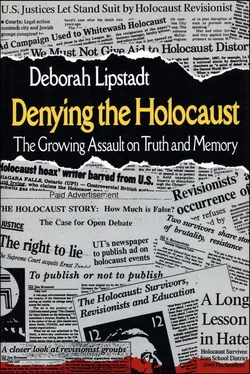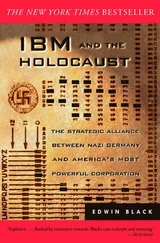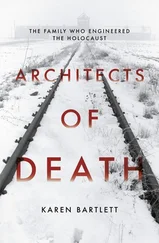Chomsky’s behavior can be contrasted with that of thirty-four of France’s leading historians who, in response to Faurisson’s efforts, issued a declaration protesting his attempt to deny the Holocaust. The declaration read in part: “Everyone is free to interpret a phenomenon like the Hitlerite genocide according to his own philosophy. Everyone is free to compare it with other enterprises of murder committed earlier, at the same time, later. Everyone is free to offer such or such kind of explanations; everyone is free, to the limit, to imagine or to dream that these monstrous deeds did not take place. Unfortunately, they did take place and no one can deny their existence without committing an outrage on the truth. It is not necessary to ask how technically such mass murder was possible. It was technically possible, seeing that it took place. That is the required point of departure of every historical inquiry on this subject. This truth it behooves us to remember in simple terms: there is not and there cannot be a debate about the existence of the gas chambers.” The full text of the declaration appeared in Le Monde, February 21, 1979.
In an apparent emulation of the deniers, a small group of Americans, led by a woman in California, Lillian Baker, has made the same claims about the World War II Japanese concentration camps in the United States. Manzanar, the infamous concentration camp for Japanese Americans, contained only “voluntary visitors.” They were treated royally, given every amenity, and had “all they could eat at our government’s expense.” Like the Jews, Baker and her group claim, the contemporary Japanese Americans who foster this hoax have a rationale for doing so—to divert attention from their community’s complicity with Japan during the war ( Los Angeles Times, August 28 and December 6, 1991).
Robert Lifton expressed similar ambivalences about the potential impact of his research on doctors who participated in the Nazi killing system. He feared that his explanation would sound as if he were condoning or rationalizing their actions (Lifton, The Nazi Doctors: Medical Killing and the Psychology of Genocide [New York, 1986], pp. xi-xii).
Lindbergh’s best-known and most controversial statement during this period was made in September 1941 at an America First rally in Des Moines, Iowa. In a speech entitled “Who Are the War Agitators?” he told eight thousand people that the “three most important groups who have been pressing this country toward war are the British, the Jewish and the Roosevelt Administration…. If any one of these groups—the British, the Jewish, or the Administration—stops agitating for war… [there would] be little danger of our involvement.”
In 1977, denier James Martin described Morgenthau’s plan as an example of running postwar Germany “according to the Old Testament instead of the New.” He claimed the plan had been implemented and resulted in the German population transfers, which he called the “most barbarous event of the history of Europe…. It is rare that one ever sees an animal forced to endure under such degraded and forlorn circumstances.” Martin, a member of the Journal of Historical Review ’s editorial board, is listed as a contributor to the 1970 Encyclopedia Britannica. James J. Martin, The Saga of Hog Island and Other Essays in Inconvenient History (Colorado Springs, 1977), p. 193.
The Einsatzgruppen were the special mobile killing units that conducted the massacres of Soviet Jewry immediately after the Germans declared war on the USSR.
The section on the USSR appears as follows:
| - |
Prewar Jewish Population, 1939 |
Postwar Jewish Population, 1945 |
| USSR |
3,020,000 |
2,600,000 |
| • Estonia |
4,500 |
- |
| • Latvia |
95,000 |
- |
| • Lithuania |
145,000 |
- |
| Total: |
3,264,500 |
2,600,000 |
Note: The postwar USSR total includes 300,000 deportees, refugees, and survivors from other territories.
When the three hundred thousand deportees, refugees, and survivors are deducted from the 2.6 million the total corresponds to a loss of 1 million Jews in the USSR.
Author’s note: Hitler changed the date of his original speech threatening the Jews with annihilation from January 30, 1939, to September 1, 1939.
American Jewish organizations have traditionally opposed such a question because they believe it would violate the constitutional guarantee of the separation of church and state.
The editor of the Journal of Historical Review was clearly distressed by the ambiguity of this statement, which could be interpreted to suggest that Barnes believed that there might have actually been “gas ovens” in Auschwitz. When the Journal reprinted the article in 1980 the editor added a footnote to Barnes’s comment about the gas ovens: “Of course Barnes is confused here by the difference between a ‘gas chamber’ and a ‘gas oven.’ Shortly after writing this article, he came to reject the entire holocaust myth, not just part of it.”
This is what they have done in relation to the charge that Nazis used Jewish cadavers for the production of soap. When scholars of the Holocaust corrected this notion, the deniers were quick to charge they did so in order to avoid being exposed as willful liars. (See chapter 10.)
The Anti-Defamation League (ADL) was a favorite target of the revisionists. In a confidential report written in 1944 John Flynn cited the ADL as one of the groups responsible for a program to silence isolationists and “destroy the[ir] reputations” by intimidating them and anyone who might be influenced by them. In 1947 the Chicago Tribune ran a series of five articles by Flynn making these allegations (Wayne S. Cole, Roosevelt and the Isolationists, 1932–1945 [Lincoln, Nebr.]).
Villard admonished Barnes about making these claims: “I do not think for a moment that you need lay this to the Jews. [Vansittart] is a hard, aggressive fighter as his books have shown and when he chose Nizer as his counsel he picked the man who got a $100,000 verdict against Victor Ridder, which the judge cut to $50,000. Englishmen are very sensitive about libels…. I don’t believe he needed the slightest prodding from anybody.”
Students at Harvard and Columbia have told me that they had no idea he was writing in this fashion when they were using his books.
This argument was used by the deniers until the Soviets adopted a sharp anti-Zionist policy. It then became difficult to claim the existence of a Zionist-Soviet plot, and the deniers stopped repeating this argument.
This was not the only time App relied on biblical themes to depict Jews. In 1948 he called for the reeducation of Jews “away from their eye for an eyeism.” (App, Morgenthau Era Letters, p. 73.)
All these assertions are absolutely false. Israel has opened its archives to all credible scholars and students working in this field.
A “page of testimony” at Yad Vashem consists of the name and birthdate of the victim as well as additional biographical information. It is usually filled out by a surviving relative, friend, or neighbor. Obviously many people died and did not leave behind any relatives or neighbors who could perform this task of memorializing their name.
Читать дальше












